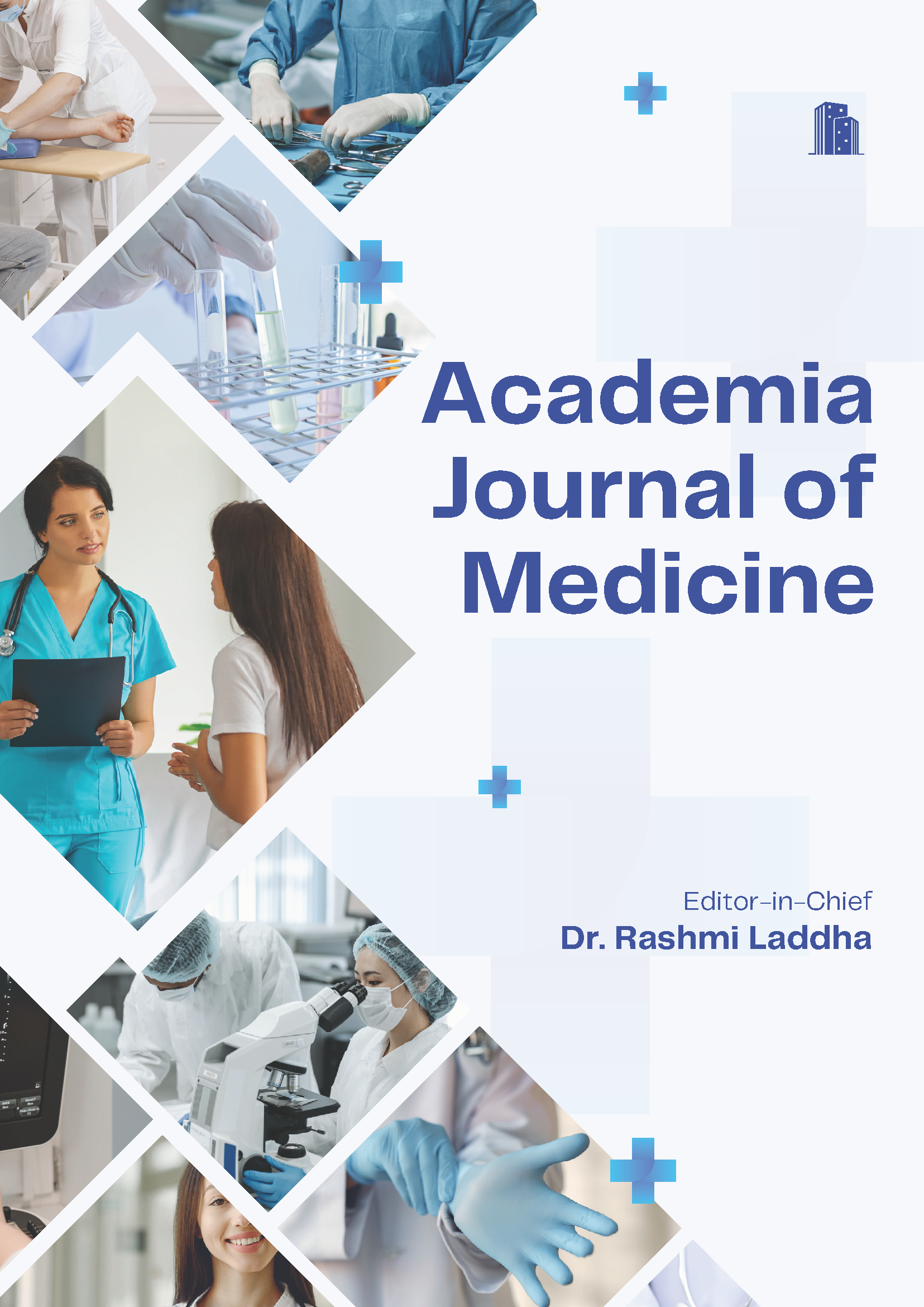Assessment of Utility of Carbamylated Hemoglobin in Determining the Overall Adequacy of Hemodialysis
Keywords:
Carbamylated haemoglobin, Serum creatinine, HaemodialysisAbstract
Background: CKD is characterized by progressive and ongoing loss of kidney function of not <3 months duration with or without decrease in glomerular filtration rate (GFR). CKD leads to increase in blood urea and serum creatinine levels. The present study was conducted to assess the utility of Carbamylated Hemoglobin in determining the overall adequacy of Hemodialysis. Subjects & Methods: 25 patients with chronic kidney disease divided into two groups and one healthy control group. Carbamylated Hemoglobin (CHb) checked at 0 and at 3 months. Kt/V assessed at 0 and 3 months and average Kt/V was calculated. Results: There was non- significant difference in Kt/V, Valine hydantoin absorbance at 570 nm, CHb (ug/gm Hb) and blood flow rate (ml/min) at 8 hours and 12 hours (P> 0.05). The regression equation at 3 months is CHb. = 482.33 + 0.122 age (Yrs) – 0.492 gender + 0.192 duration(months) - 0.624 HD frequency/wks(Hrs) - 0.207 HD vintage(months) + 0.063 BMI + 6.021 Hb.(gm%) + 0.011 BUL(mg/dl) – 0.191 Creatinine(mg/dl) + 0.123 Na(mmol/l) – 1.047 K(mmol/l) + 5.642 Alb.(gm/dl) – 55.12 pH + 0.903 HCO3 - 0.018 iPTH(pg/ml) – 11.54 Kt/V – 96.54 Valine hydantoin absorbance + 0.005 Blood Flow Rate (ml/min). Conclusion: Carbamylated haemoglobin had a direct correlation with blood urea nitrogen levels and with serum creatinine levels in chronic kidney disease patients on maintenance haemodialysis.
Downloads
References
1. Stim J, Shaykh M, Anwar F, Ansari A, Arruda JA, Dunea G. Factors determining hemoglobin carbamylation in renal failure. Kidney Int. 1995;48(5):1605–1610. Available from: https://doi.org/10.1038/ki.1995.454.
2. Dirnhuber P, Schutz F. The isomeric transformation of urea into ammonium cyanate in aqueous solutions. Biochem J. 1984;42:628–660.
3. Davenport A, Jones S, Goel S, Astley JP, Feest TG. Car bamylated hemoglobin: A potential marker for the adequacy of hemodialysis therapy in end-stage renal failure. Kidney Int. 1996;50(4):1344–1351. Available from: https://dx.doi.org/10.
1038/ki.1996.447.
4. Gupta PK, Kumar H, Kumar S, Jaiprakash M. Cation Exchange High Performance Liquid Chromatography for Diagnosis of Haemoglobinopathies. Med J Armed Forces India. 2009;65(1):33–37. Available from: https://dx.doi.org/10.1016/ S0377-1237(09)80051-8.
5. Naresh Y, Srinivas N, Vinapamula KS, Pullaiah P, Rao PVLNS, Sivakumar V. Carbamylated Hemoglobin can Differentiate Acute Kidney Injury from Chronic Kidney Disease. Indian J Nephrol . 2018;28(3):187–190. Available from: https://dx.doi.org/10.4103/ijn.IJN_341_16.
6. Davenport A, Jones SR, Goel S, Hartog A, M. Differentiation of acute from chronic renal impairment by detection of carbamylated hemoglobin. Lancet. 1993;341:1614–1631. Available from: https://doi.org/10.1016/0140-6736(93)90757- 8.
7. National Kidney Foundation. K/DOQI clinical practice guide lines for chronic kidney disease: evaluation, classification, and stratification. Am J Kidney Dis. 2002;39(2):1–266.
8. Tarif N, Shaykh M, Stim J, Arruda JAL, Dunea G. Car bamylated hemoglobin in hemodialysis patients. Am J Kidney Dis. 1997;30(3):361–365. Available from: https://dx.doi.org/ 10.1016/s0272-6386(97)90280-8.
9. Hasuike Y, Nakanishi T, Maeda K, Tanaka T, Inoue T, Takamitsu Y. Carbamylated Hemoglobin as a Therapeutic Marker in Hemodialysis. Nephron. 2002;91(2):228–234.
Available from: https://dx.doi.org/10.1159/000058397. 10. Frazao JM, Barth RH, Berlyne GM. Carbamylated Hemoglobin in Prerenal Azotemia. Nephron. 1995;71(2):153–155. Avail able from: https://dx.doi.org/10.1159/000188704.
11. Kwan JTC, Carr EC, Neal AD, Burdon J, Raftery MJ, Marsh FP, et al. Carbamylated Haemoglobin, Urea Kinetic Modelling and Adequacy of Dialysis in Haemodialysis Patients. Nephrol Dial Transplant. 1991;6(1):38–43. Available from: https://dx. doi.org/10.1093/ndt/6.1.38.
12. Wynckel A, Randoux C, Millart H, Desroches C, Gillery P, Canivet E, et al. Kinetics of carbamylated haemoglobin in acute renal failure. Nephrol Dial Transplant. 2000;15(8):1183–1188. Available from: https://dx.doi.org/10.1093/ndt/15.8.1183.
13. Stim J, Shaykh M, Anwar F, Ansari A, Arruda JAL, Dunea G. Factors determining hemoglobin carbamylation in renal failure. Kidney Int. 1995;48(5):1605–1610. Available from: https://dx.doi.org/10.1038/ki.1995.454.
